Do you want to build a business with a regular, predictable income? Think about how to create a subscription app. You can not only make money from this but also help others earn money.
If you’re building an app like Patreon, you will be providing an online membership platform that connects artists with patrons. The authors will contact an appropriate fanbase that will pay them for content. The amount is variable depending on the fans’ interest and recognition of the effort. Besides, they will receive premium content the first. Thus, the business model of the Patreon app is beneficial for both sides.
In case you do it right, you can create an app that rivals Patreon and the like. But before you create a Patreon clone, consider how subscription apps work and what features you can add to make your app stand out.
Table of Contents
- 1 What is Patreon and How Does It Work
- 2 Reasons to Develop a Patreon Clone App
- 3 List of Must-Have Features of a Patreon-Like App
- 4 How to Create Your Own Patreon Clone
- 5 Technologies Required for Patreon Clone App Development
- 6 How to Earn Money with Your Patreon Clone?
- 7 How Much Does It Cost to Make an App Like Patreon?
- 8 The Bottom Line
What is Patreon and How Does It Work
Patreon is a specially designed community app that helps content creators and subscribers benefit from each other. Other professionals like writers, podcasters, videographers, and many similar content creators can quickly sign up to this platform to generate a regular and decent income in the long run. Patreon works on a subscription-based model as well as OnlyFans.
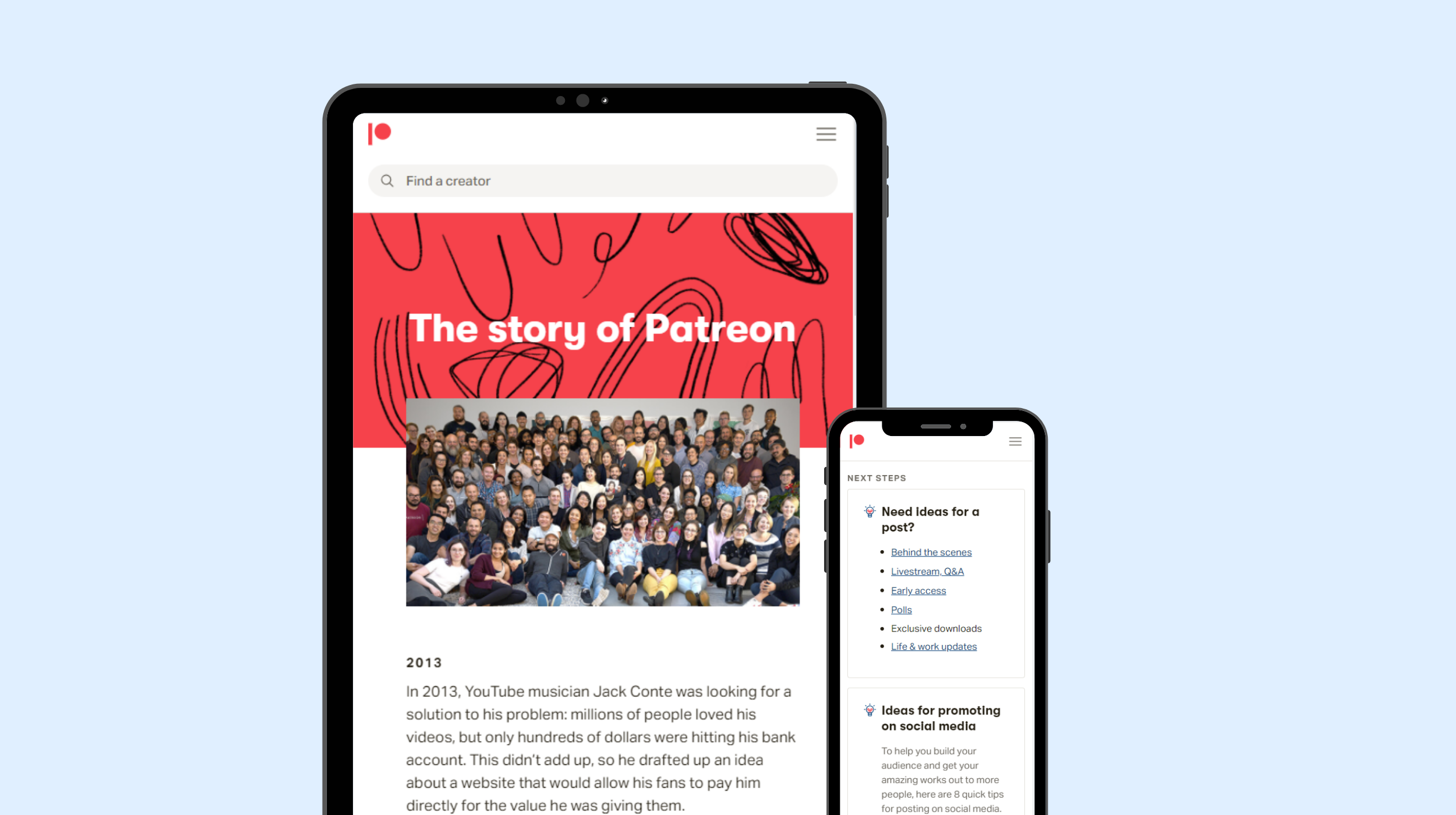
As an ongoing Kickstarter, Patreon allows creators to crowdfund their work. However, unlike Kickstarter, Patreon’s funding efforts don’t stop after a single project or deadline. Instead, Patreon allows sponsors to continually support the work of their favourite authors. Some artists have only been with Patreon for a few months, while others have been using the platform for years.
- Using Patreon is easy. Artists create pages to pay for subscriptions from patrons, offering certain perks or incentives, and fans can promise certain amounts of money depending on those levels and benefits.
- Artists can also set up their pages to be billed per project rather than monthly billed. Commonly, this option is used by creators who make less than 4 artworks per month. So, it allows artists to get paid whenever they create content, removing the pressure to keep to a strict schedule.
- Patreon allows artists to customize their pages, giving them the opportunity to tailor the way they interact with their fans and patrons. Some creators may have only a few relatively inexpensive levels while others may have several levels ranging from $5 to $10,000 per month. However, on average, patrons pay around $12 a month.
Reasons to Develop a Patreon Clone App
Patreon first hit the scene in 2013 with a mission to help artists earn money on their content. In the first 18 months since its launch, Patreon has amassed 125,000 patrons (supporters) for a total monthly payout of $1 million. Patreon has over 6 million active backers these days, supporting a network of 200,000+ creators.
Here is the list of the most interesting stats:
1️⃣ Patreon hosts over 6 million active supporters each month, known as patrons. These supporters contribute financially to the development of the authors, usually receiving membership fees in return. 4 million of the patrons have joined in the past 3 years.
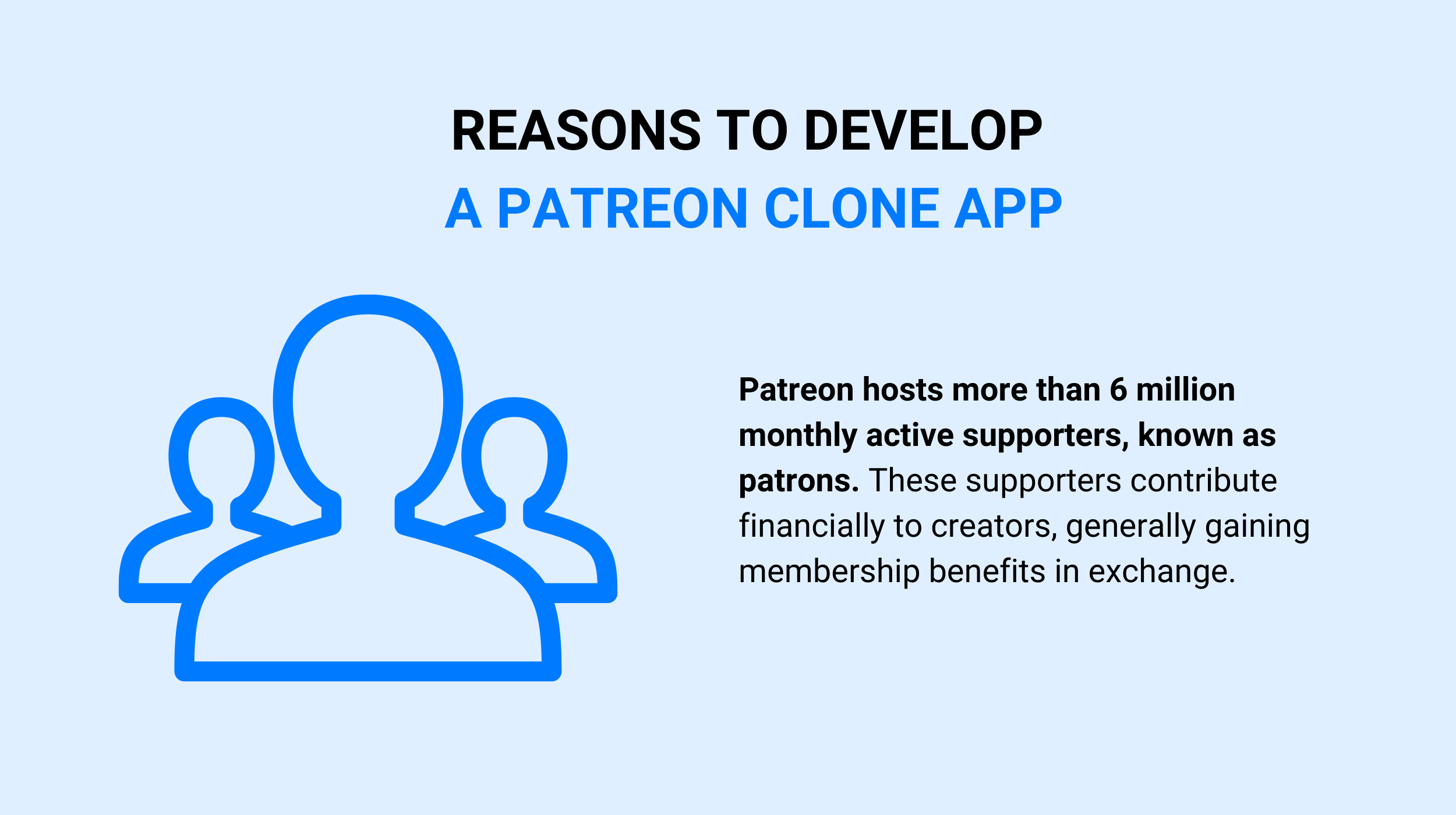
2️⃣ More than 200,000 creators use Patreon. As Graphtreon states, 187,732 creators have at least one patron. This is 9.39% more than last year. Since March 2016, the number of Patreon creators has increased by 7.02 times. During this time, 160 669 new members have joined the platform. In the past two years alone, Patreon has registered 48,491 new creators (25.88% of the existing base).
3️⃣ According to the company, Patreon’s artists make more than $1 billion a year in total. The total earnings of creators on the platform have doubled since 2019.
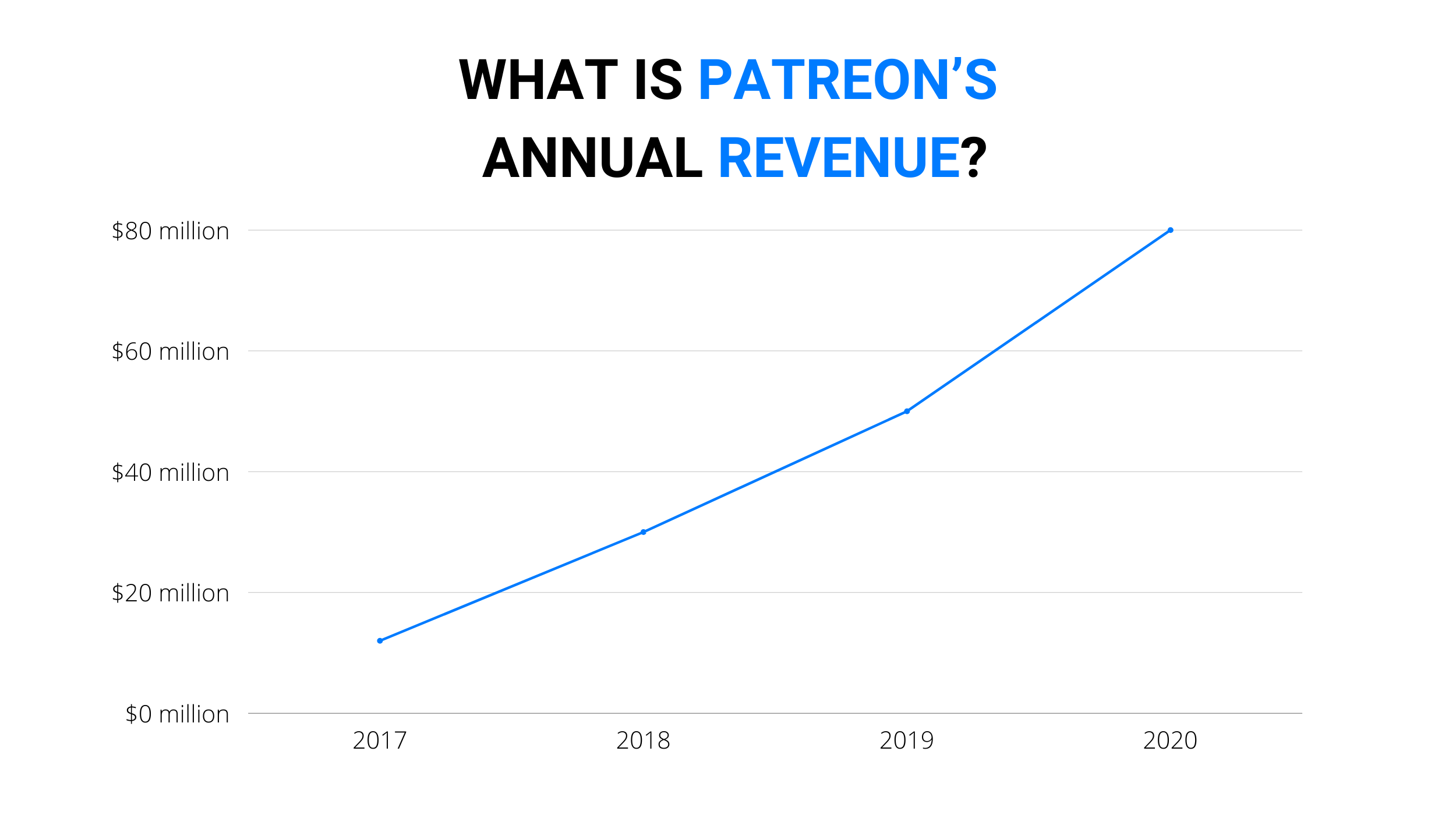
4️⃣ The creators on Patreon earned a total of $21.74 million in February 2021. Monthly payments are up 68.42% over the past year, up from $12.9 million in February 2020.
5️⃣ Patreon makes money by taking a portion of all creators’ income generated through the platform. Patreon currently charges between 5% and 12% of the creator’s earnings (plus payment processing fees), depending on the product plan chosen by the customer. Assuming an average cut of 8% of total profits, Patreon records $80 million in annual revenue.
List of Must-Have Features of a Patreon-Like App
A prospective mobile app development company will review your expected feature list and give you the appropriate budget. It is important to complete the list as soon as possible to protect yourself from fluctuations in cost at the end of the project.
The application includes three types of users: artists, patrons, and admins. The features a bit differ from one user role to another.
Artist features
✔ Creating a profile
Registered creators can customize their profiles by specifying their reward expectations and potential subscribers.

✔ Function content
As with the LinkedIn feature, the creator can decide what he/she wants to showcase at the top of their profile.
✔ Reward management
The artist gets the opportunity to manage the awards that he can send to his fans.
✔ Donor management
If any legitimate reason is found, the artist can remove the donor from the subscriber list.
✔ Income management
The money earned on the artist’s account can be seen with all the details about the patrons who presented the award.
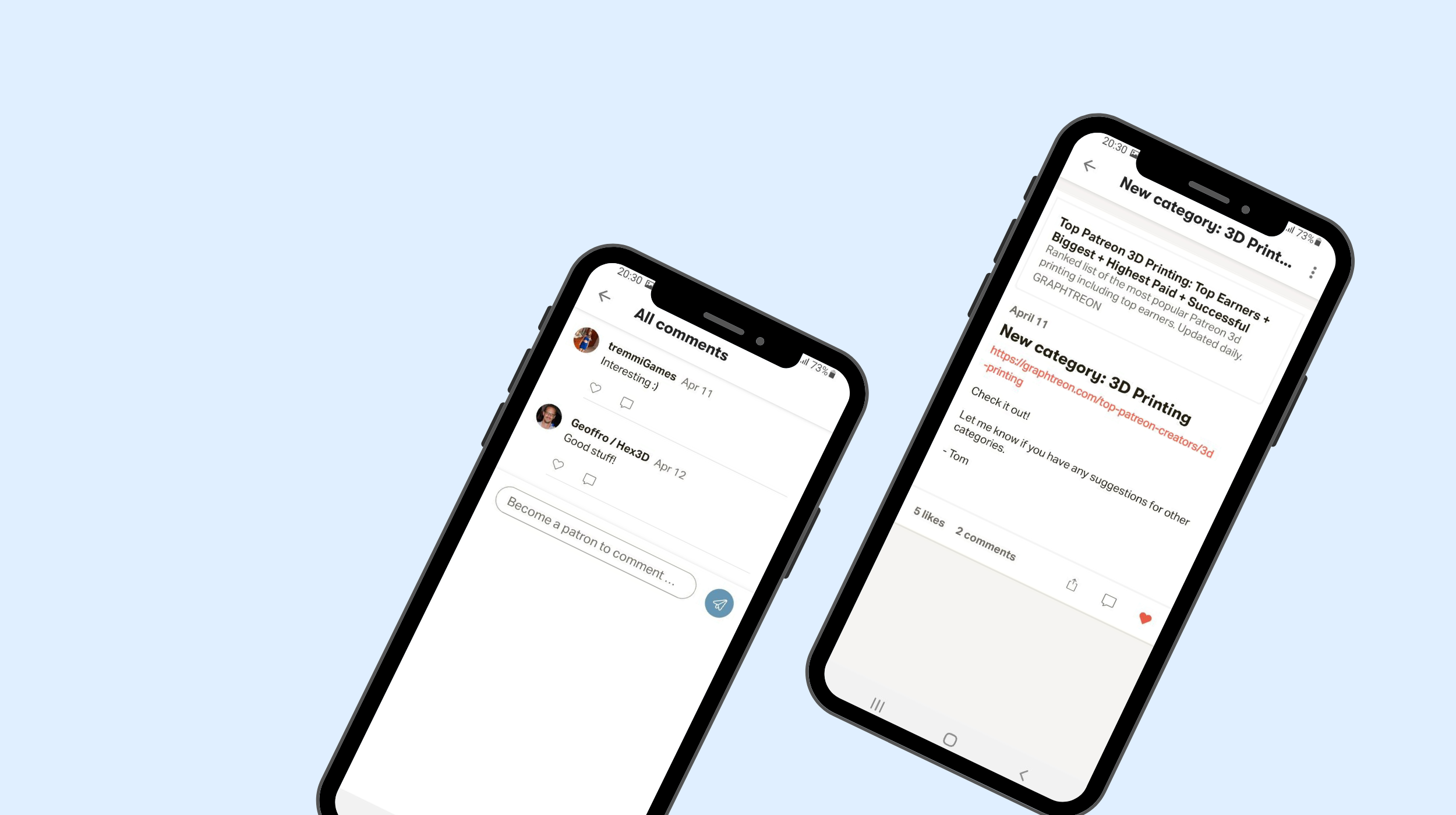
✔ Share content
Let the artist add content and showcase their talent to the audience.
✔ Pop-up notifications
Artists can notify their subscribers of a new content release.
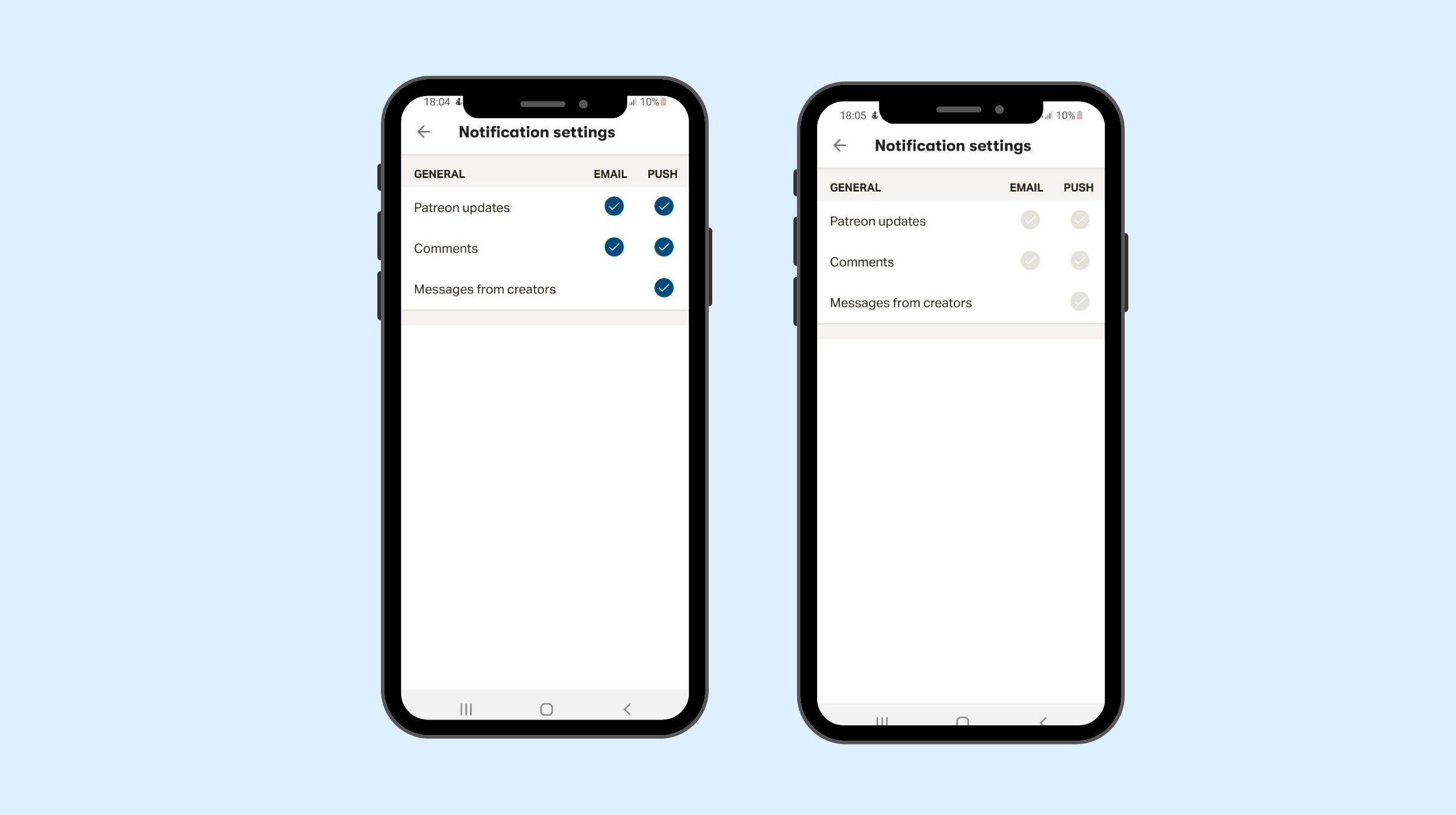
✔ List of regular visitors
Artists have the right to view and download a list of regular visitors who have subscribed to his / her work.
✔ Social media connection
Allow artists to link their social media accounts to the app.
✔ Analytics in the app
The artist can analyze content releases, revenues, and sales based on reports.
Patron features
✔ Profile setting
A visitor can register an application using an email address and personal interest information.

✔ Subscription
The patron can follow their favorite content creators and subscribe to their recent activities.
✔ Comment or like the artist
Patrons can show their love for a creator by liking and commenting on the release of their content.
✔ View awards
Donors can check out all the awards they’ve received from the content creator.
✔ Payment history
Patrons can choose who to pay, but at the same time, they can view the history of payments made.
✔ Switch to artists
It doesn’t matter if a donor has registered as a patron; he/she should be able to switch the profile to an artist whenever wants.
✔ Take a deposit
Content fans can go after the artist and post a deposit for a certain amount.
✔ Purchase message
If a subscriber likes exclusive content, they can buy the publication.

✔ A personal chat with the content creator
In case the subscriber wants to talk to the content creator, he/she can initiate a video call or an audio call.
Admin features
✔ Dashboard
So, yes, the dashboard is the place from where you can control everything else; the administrator has the right to see the actions.
✔ Artist guide
The administrator is responsible for checking the artist profiles before posting them to the application.
✔ Alert management
The administrator is responsible for managing all alerts sent to the sponsor or content creator.
✔ Support
The administrator is responsible for responding immediately to requests from users to keep them happy.

✔ Commission management
The administrator can set a commission percentage for each promise made by the sponsor.
Extra features
✔ Multi-Currency support
Do you plan to release the application globally? Then you should provide multi-currency support on the platform.
✔ Advertising
You can allow third parties to display their ads on your platform.
✔ Notifications
Allow artists and patrons to receive notifications of any important application update.
How to Create Your Own Patreon Clone
To make the workflow clear, let’s dive into the main stages of Patreon clone app development.
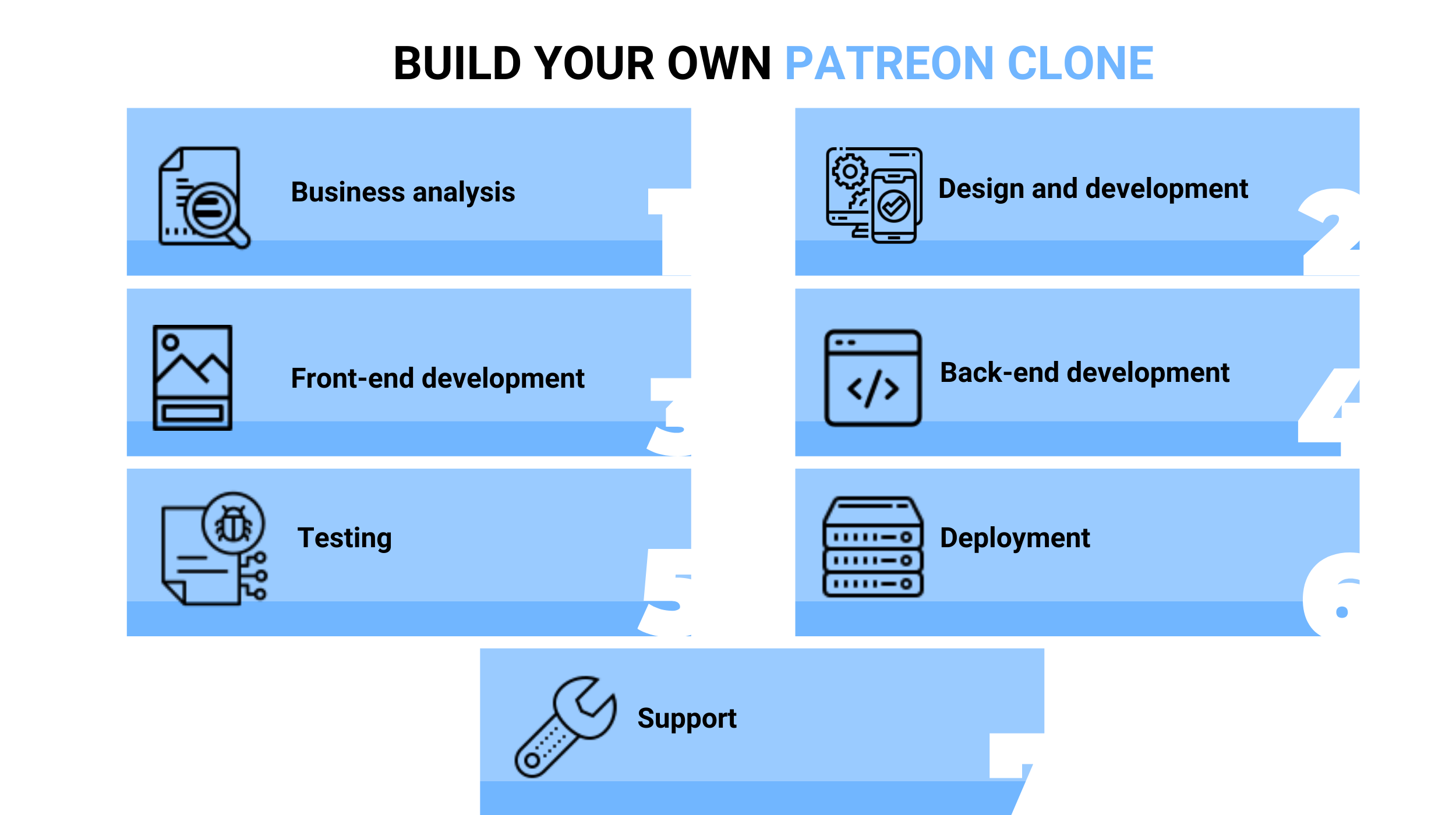
Stage #1. Business analysis
A competent business analyst knows how to calculate and avoid risks, monitor the progress of development, and bring a project to a high level of return on investment immediately after launch. At this point, the Code & Care team provides you with a complete planner with clear milestones.
Stage #2. Design and development
The design of the site will immediately affect the impression of the consumer and his further desire to return, so try to make everything as fashionable, simple, and comfortable as possible. The first step is to create a basic style. The second step is to develop details such as login form, profile management, chat, payments, settings, management, accounts, messages, etc.
Stage #3. Front-end development
The app looks simple, but this is the achievement of a development team that has spent long hours combining design, performance, and functionality. When planning functionality, you need to think through absolutely all the details.
Stage #4. Back-end development
Back-end development requires close attention to detail and great developer skills. The basic functionality consists of setting up the environment, launching the project, architecture, and design of the database, preparing for deployment; authorization, subscribing/unsubscribing/blocking users, managing profiles, notifications, payments, integration with the payment system, wallets, commission, etc.
Stage #5. Testing
A project requires a huge amount of testing at all stages of its implementation to avoid bugs and make the user experience excellent.
Stage #6. Deployment
The next step is to deploy the application to your server and push it to the application platforms.
Stage #7. Support
We are ready to support and update the project after its launch.
Technologies Required for Patreon Clone App Development
To stay up to date with new web technologies, we recommend using Javascript frameworks to create both tiers of your application.
For client applications, we are going to use ReactJS, which is a flexible and scalable front-end framework very popular to use when developing web applications. We have a lot of experience with this framework and have a great community to support issues and find the answers you are looking for.
On the back end, we’re going to use the NodeJS/NestJS and microservices approach. Much easier to stick with JavaScript for both client/server sides. It is now a good way to leverage best practices and support application development within a single programming language, which makes it easier to maintain applications in the future and reduces the cost of hiring a development team, and also reduces the risk of disruption to development schedules due to changes in the development team.
AWS is the best solution for hosting modern applications. Provides many services for comfortable platform deployment and support. To deploy the services, the RDS service will be used for database storage.
How to Earn Money with Your Patreon Clone?
Patreon makes money by charging creators a variable fee. The firm offers three pricing plans: Lite, Pro, and Premium.
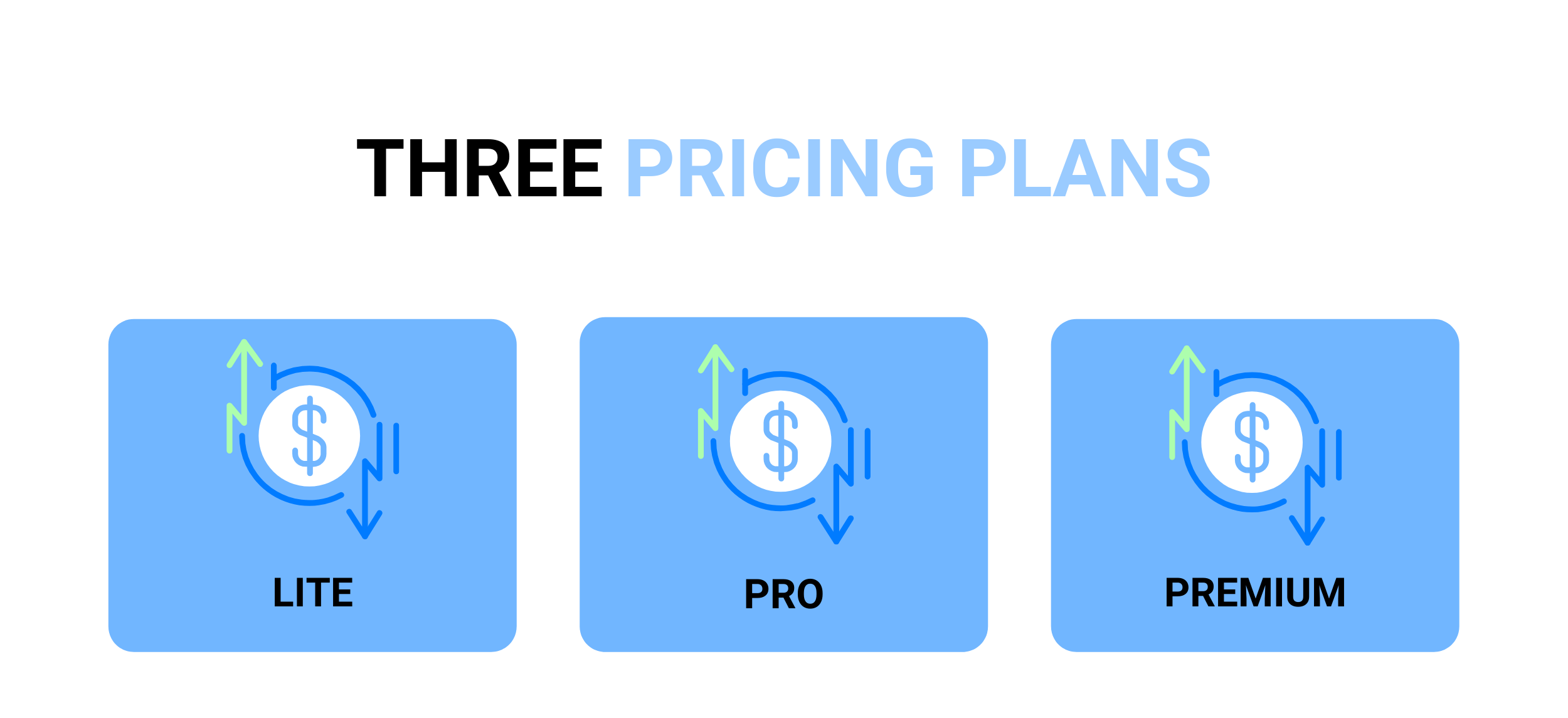
Creators pay 5%, 8%, or 12% of the monthly money they earn on Patreon, depending on the plan they choose. The patrons, in turn, support their favorite authors with a monthly subscription fee.
These plans also include a unique set of services such as analytics reports, workshops, priority support, dedicated account managers, and unlimited third-party application integrations.
Creators have access to alternative income streams, in particular through the premium tier. They could, for example, start selling branded gear (as a result of Patreon’s June 2018 acquisition of Kit), while Patreon handles orders.
Patreon also charges a processing fee for every gift a patron makes. There is a 5% commission plus $ 0.10 for micropayments (less than $ 3). All payments over $ 3 will be charged a 2.9% + $ 0.30 fee.
You can use Visa, MasterCard, American Express, or PayPal as your payment system. However, Patreon charges its commissions at cost, which means it doesn’t profit from them.
Patreon’s fees
Patreon has over 3 million backers, which is an impressive number. In addition, users can subscribe to a support plan, the details of which are set by the creator. Patreon donates 90% of the promised money when fans support the artist’s creativity. The remaining 10% are reduced in platform and processing fees, at 5% each.
Payment processing fees
Patreon charges fees in addition to subscription fees to accept donations from creators. Payments up to $3 will be charged a 5% + 10 cents commission. Any payment over $3 will be charged 2.9% plus 30 cents.
How Much Does It Cost to Make an App Like Patreon?
It is difficult to estimate an app like Patreon development. The budget includes quality testing, maintenance, prototyping, etc. However, this is our estimated price and may vary depending on various factors such as your goal, expectations, application complexity, UI/UX design, etc.

We suggest starting with the Discovery phase – the preparatory process for the development phase. The deliverables should include product specification with mockups and wireframes, setting up the application architecture, planning an action plan for the POC and the final product, anticipated efforts for each sprint, and design documentation.
The proof of concept should take about 8-10 weeks before the basic functionality is released to the end-user. This should be discussed during the opening and planning phase. We can propose our plan for the next couple of months to get off to a good start, and then further implementation should be determined in the planning sessions.
A complete product can take from 16 weeks, depending on the desired functionality and market needs of our users.
At Code&Care outsourced product development is starting from $34.50 hourly. Also, we provide extended team & staff augmentation services at a fixed cost of $4800 monthly.
The Bottom Line
You are on this page and have already read the entire article, which is the first step to creating your Patreon clone. The time and investment estimate may seem overwhelming, but keep in mind the relatively quick return on investment of such a project. If you are interested in an individual detailed consultation, please contact us via email: andrew.gromenko@code-care.pro. We will be happy to share our experience and help you choose the right roadmap for your project.














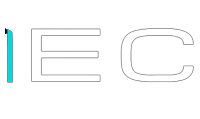

Popular
Latest